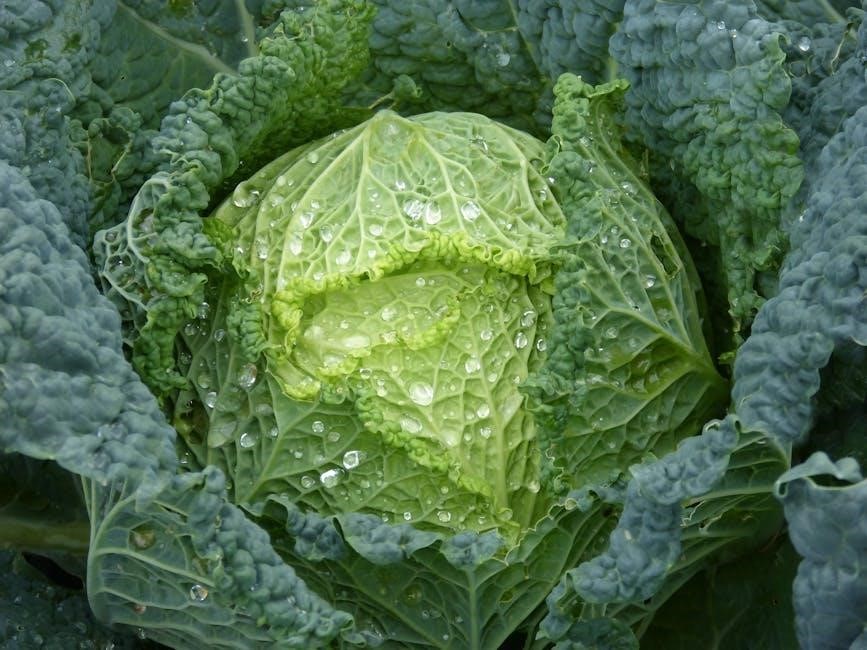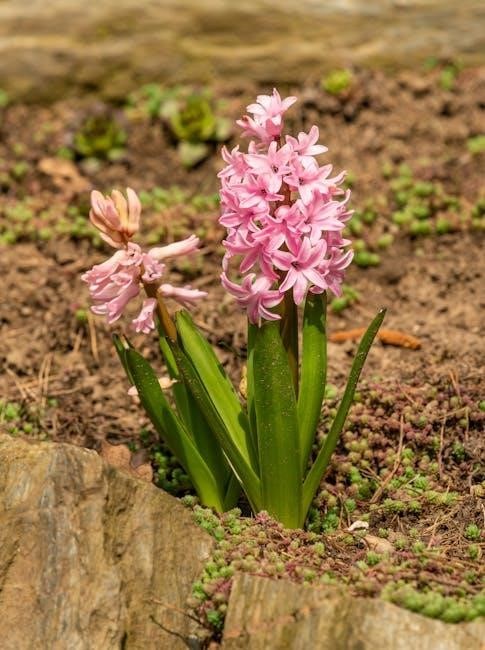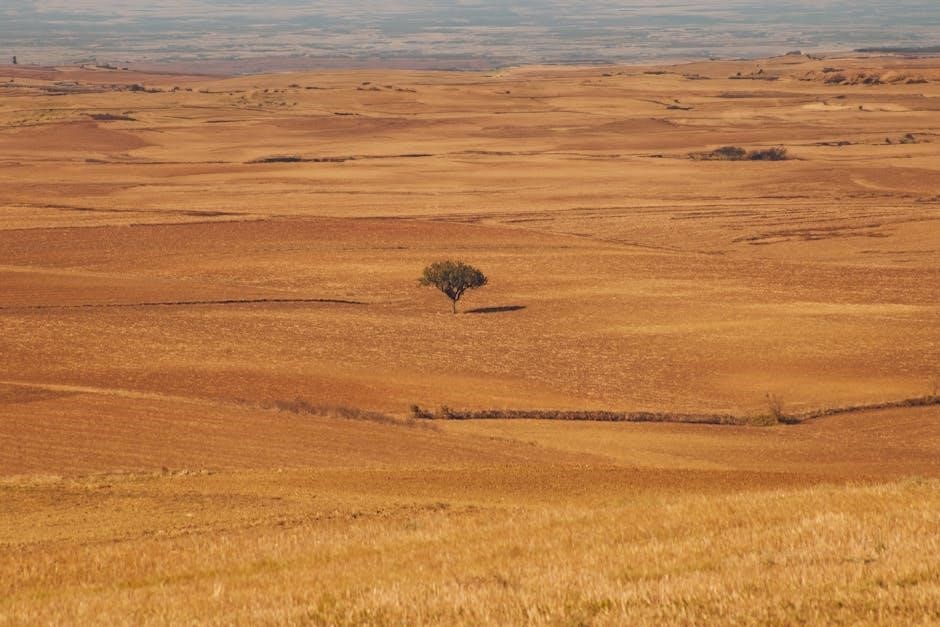Munsell Soil Color Chart PDF: A Comprehensive Guide
The Munsell Soil Color Chart PDF serves as a standardized tool for identifying and classifying soil colors. It utilizes the Munsell color system, which organizes colors based on hue, value, and chroma. This guide explores the chart’s structure and applications, providing insights into soil analysis for various fields.

The Munsell Soil Color Chart is a vital resource in various disciplines, providing a standardized method for describing soil color. It’s more than just a collection of colors; it’s a system based on the Munsell color notation, organizing colors by hue, value, and chroma. This allows for consistent and objective soil color identification across different locations and observers. The chart’s widespread use stems from its ability to offer a common language for communicating about soil properties.
Originally developed to standardize color descriptions, the Munsell system has become indispensable in fields like soil science, archaeology, and environmental science. The chart features a series of color chips, each representing a specific combination of hue, value, and chroma. By comparing soil samples to these chips, users can determine the Munsell notation for the soil, providing a concise and informative description of its color. Accessing the Munsell Soil Color Chart in PDF format offers convenience and portability, making it a readily available tool for field work and research. The Revised Edition ensures the most up-to-date and accurate color standards are being utilized.
Understanding Munsell Color Notation: Hue, Value, and Chroma

The Munsell color notation is a three-dimensional system that defines color based on three independent attributes: hue, value, and chroma. Understanding these attributes is crucial for accurately interpreting and utilizing the Munsell Soil Color Chart. Each attribute plays a unique role in describing a color’s characteristics, allowing for a precise and standardized representation. Hue refers to the basic color family, such as red, yellow, or blue. Value represents the lightness or darkness of a color, ranging from black to white. Chroma indicates the purity or saturation of a color, describing how vivid or dull it appears.
In the Munsell system, these attributes are numerically and alphabetically represented. For example, a soil color might be notated as “10YR 5/4,” where “10YR” represents the hue, “5” represents the value, and “4” represents the chroma. This notation provides a concise and unambiguous description of the soil’s color. Mastering the Munsell color notation enables users to effectively communicate soil color information and compare soil samples across different locations and studies. The Munsell Soil Color Chart PDF provides a visual reference for these attributes, facilitating accurate color assessment and interpretation.
Hue: Defining the Basic Color
Hue, the first element of the Munsell color system, is what most people commonly understand as “color.” It specifically refers to the dominant spectral color, placing it within the spectrum of red, yellow, green, blue, and purple. In the Munsell Soil Color Chart, hue is represented by a combination of letters and numbers, such as 10R, 2.5YR, 5Y, and so on. The letter indicates the primary hue, while the number specifies its position within that hue circle. For instance, 5Y is a yellow hue, while 10R indicates a red hue.
The hue notation provides a crucial starting point for characterizing soil color. Different soil compositions and mineral contents often result in distinct hues. For example, iron oxides can contribute to reddish or yellowish hues, while organic matter may lead to darker, brownish hues. Understanding the hue of a soil sample is essential for making inferences about its properties and origin. The Munsell Soil Color Chart PDF provides a range of hue chips, allowing users to visually match soil samples to the corresponding hue notation, facilitating consistent and accurate color identification.
Value: Representing Lightness or Darkness
Value, the second component of the Munsell color system, describes the relative lightness or darkness of a color. It ranges on a scale from 0 to 10, where 0 represents absolute black and 10 represents pure white. In the Munsell Soil Color Chart, value is denoted by a numerical value placed after the hue designation. For instance, in the notation 5YR 5/3, the “5/” indicates the value. A higher value number suggests a lighter color, while a lower number indicates a darker color.
The value of soil color is strongly influenced by the amount of organic matter present. Soils rich in organic matter tend to have lower values, appearing darker due to the humic substances that absorb light. Conversely, soils with less organic matter and higher mineral content often exhibit higher values, appearing lighter. Value is a critical parameter in soil characterization, as it provides insights into soil fertility, drainage, and overall composition. By comparing a soil sample to the value chips in the Munsell Soil Color Chart PDF, users can accurately assess its lightness or darkness, contributing to a comprehensive soil description.
Chroma: Indicating Color Purity or Saturation
Chroma, the third parameter in the Munsell color system, defines the color’s purity or saturation. It represents the degree to which a color differs from a gray of the same value. Chroma values range from 0, representing a neutral gray, to higher numbers indicating increasing color intensity. In the Munsell notation, chroma is the number following the slash after the value; for example, in 10YR 6/4, the “4” signifies the chroma. Higher chroma values imply a more vivid and intense color, while lower values suggest a duller, more muted color.
Chroma in soil color is often related to the concentration of specific minerals, such as iron oxides. Well-drained soils with abundant iron oxides tend to exhibit higher chroma values, resulting in brighter, more reddish or brownish colors. Poorly drained soils, where iron is reduced, typically have lower chroma values, appearing grayer or more subdued. Accurate assessment of chroma is crucial for soil identification because it provides information about the soil’s weathering processes, mineral composition, and drainage characteristics. By comparing a soil sample against the chroma chips in the Munsell Soil Color Chart PDF, one can determine the purity or saturation of its color, adding valuable information to soil characterization.
Using the Munsell Soil Color Chart for Soil Identification
The Munsell Soil Color Chart is an indispensable tool for accurate soil identification. The process involves comparing a prepared soil sample to the color chips within the chart to determine the closest match. Begin by collecting a representative sample of soil from the desired horizon. Ensure the sample is moist, as color changes with moisture content. Next, break up any large clods and prepare a smooth, uniform surface for comparison.
Under consistent lighting conditions, hold the soil sample next to the Munsell color chips. Systematically compare the soil’s color to the hue, value, and chroma of the chips. Find the chip that most closely resembles the soil’s color and record its Munsell notation. This notation provides a standardized description of the soil’s color, which can be used for classification and comparison.
It is essential to perform this comparison carefully, considering that soil color can be influenced by factors like organic matter content and mineral composition. When properly used, the Munsell Soil Color Chart aids in distinguishing different soil types, understanding their properties, and inferring information about their origin and formation. The chart is an invaluable resource for soil scientists, geologists, archaeologists, and agricultural professionals.
Comparing Soil Samples to Munsell Color Chips
Accurately comparing soil samples to Munsell color chips is crucial for reliable soil identification. The process requires meticulous attention to detail and a standardized approach. Start by ensuring that both the soil sample and the Munsell chart are illuminated by natural daylight, avoiding direct sunlight, which can distort colors. Artificial lighting should mimic natural daylight as closely as possible.
Prepare the soil sample by moistening it and creating a smooth, uniform surface. This enhances color visibility and minimizes variations caused by surface irregularities. Hold the soil sample directly adjacent to the Munsell color chips, systematically comparing the soil’s hue, value, and chroma to the chips on the chart. Rotate the chart to find the closest match for each attribute.
Consider that soil color may vary slightly depending on moisture content. Therefore, maintain a consistent level of moisture throughout the comparison process. Note the Munsell notation of the chip that best represents the soil’s color. This notation provides a standardized description that can be used for documentation and analysis. Multiple comparisons may be necessary to ensure accuracy, and experienced observers can often achieve more precise results.
Applications of Soil Color Analysis

Soil color analysis, facilitated by the Munsell Soil Color Chart, has diverse applications across various scientific disciplines. In archaeology and geology, soil color helps identify different soil types, understand soil formation processes, and reconstruct past environments. Distinct soil layers, each with its unique color, can provide valuable information about geological history and human activities.
Agriculture benefits significantly from soil color analysis as it helps assess soil health and composition. Soil color can indicate organic matter content, drainage characteristics, and nutrient availability. Darker soils often suggest higher organic matter content, while reddish soils may indicate the presence of iron oxides. This information assists farmers in making informed decisions about soil management practices.
Environmental science utilizes soil color analysis for monitoring soil changes and assessing environmental impacts. Changes in soil color can signal pollution, erosion, or other environmental disturbances. By tracking these changes over time, scientists can evaluate the effectiveness of conservation efforts and environmental remediation strategies. The standardized nature of the Munsell system ensures consistent and comparable data collection across different locations and time periods.
Archaeology and Geology: Identifying Soil Types
In archaeology, the Munsell Soil Color Chart is crucial for identifying and differentiating soil types within archaeological sites. Variations in soil color can indicate different periods of occupation, burial features, or the presence of artifacts. For instance, darker soil patches might signify areas where organic materials decomposed, potentially marking burial sites or refuse pits. Recognizing these subtle color variations aids in understanding site stratigraphy and past human activities.
Geologically, soil color helps in classifying and mapping different soil formations. Soil color is influenced by mineral composition, organic matter content, and oxidation state. By comparing soil samples to the Munsell chart, geologists can determine the dominant minerals present and infer the soil’s origin and weathering processes. This information is valuable for geological surveys, resource exploration, and understanding landscape evolution.
The Munsell Soil Color Chart provides a standardized and objective method for describing soil color, ensuring consistency and comparability across different studies and researchers. Its application in both archaeology and geology enhances our understanding of past environments, human-environment interactions, and the earth’s dynamic processes. The chart’s accessibility and ease of use make it an indispensable tool for field investigations and laboratory analyses.
Agriculture: Assessing Soil Health and Composition
In agriculture, the Munsell Soil Color Chart is a valuable tool for assessing soil health and composition, providing crucial insights into soil fertility and suitability for crop production. Soil color can indicate the presence of organic matter, nutrient levels, and drainage characteristics, all of which directly impact plant growth. Darker soils, for example, often suggest a higher organic matter content, which is essential for water retention, nutrient availability, and overall soil structure.
Farmers and agricultural scientists use the Munsell chart to quickly evaluate soil conditions in the field. By comparing soil samples to the standardized color chips, they can identify potential issues such as nutrient deficiencies, poor drainage, or excessive salinity. These observations can then inform decisions regarding fertilization, irrigation, and soil management practices. For instance, pale or yellowish soils might indicate a lack of nitrogen or iron, prompting the application of appropriate fertilizers.
Furthermore, soil color can help assess the effectiveness of soil conservation efforts. Changes in soil color over time can reflect improvements in soil health due to practices like cover cropping, reduced tillage, or the addition of compost. The Munsell Soil Color Chart provides a simple yet effective means of monitoring these changes and evaluating the long-term sustainability of agricultural practices, contributing to improved crop yields and environmental stewardship.
Environmental Science: Monitoring Soil Changes
In environmental science, the Munsell Soil Color Chart plays a critical role in monitoring soil changes resulting from natural processes and human activities. Soil color serves as an indicator of various environmental factors, including erosion, pollution, and climate change impacts. By tracking color variations over time, scientists can assess the extent and severity of environmental degradation, informing conservation and remediation efforts.
For instance, changes in soil color can signal the presence of contaminants, such as heavy metals or industrial waste. Unusual or unexpected colors may prompt further investigation to determine the source and extent of pollution. Similarly, soil erosion can lead to the loss of topsoil, resulting in a lighter or less vibrant soil color. Monitoring these changes helps environmental scientists identify areas at risk and implement strategies to prevent further damage.
Furthermore, the Munsell chart aids in studying the effects of climate change on soil properties. Alterations in temperature and precipitation patterns can influence soil organic matter content, moisture levels, and mineral composition, all of which are reflected in soil color. By systematically documenting soil color changes, researchers can gain insights into the complex interactions between climate and soil ecosystems, contributing to a better understanding of climate change impacts and developing effective adaptation strategies for preserving soil health and ecosystem services.
Accessing and Downloading Munsell Soil Color Chart PDFs
Accessing and downloading Munsell Soil Color Chart PDFs is crucial for researchers, students, and professionals who require a portable and readily available reference for soil color identification. While a physical chart is often preferred for accuracy, digital versions offer convenience and accessibility in the field or laboratory. Several sources provide Munsell Soil Color Chart PDFs, though it’s essential to verify their authenticity and completeness.
Official Munsell distributors and scientific organizations sometimes offer downloadable versions of the chart, either for free or as part of a paid resource. These PDFs typically include a comprehensive set of color chips, arranged according to hue, value, and chroma. However, due to copyright restrictions and the complexity of accurately reproducing colors digitally, free, complete versions are rare.
Researchers may find simplified or partial Munsell charts available for download from educational websites or research institutions. These versions might focus on specific soil types or regions. When using downloaded PDFs, it’s crucial to acknowledge the limitations of digital color representation. Computer screens and printers can vary significantly in their color accuracy, potentially leading to misidentification of soil colors. Therefore, always cross-reference digital readings with physical samples or consult a physical Munsell chart whenever possible to ensure reliable soil color assessment. Using calibration tools for your monitor can improve accuracy.
Considerations for Accurate Color Assessment
Accurate color assessment using the Munsell Soil Color Chart requires careful attention to several factors that can influence the perceived color of a soil sample. Lighting conditions, sample preparation, and observer perception all play crucial roles in obtaining reliable results.
Firstly, consistent and appropriate lighting is paramount. Natural daylight is generally preferred, but avoid direct sunlight, which can distort colors. If using artificial light, ensure it is a full-spectrum light source that closely mimics natural daylight. Incandescent or fluorescent lights can introduce color casts that lead to inaccurate readings.
Secondly, proper sample preparation is essential. Remove any large debris or organic matter that could interfere with the color assessment. The soil sample should be moist, but not saturated, as excessive moisture can darken the color. Compare the soil to the Munsell chart under consistent moisture conditions. It is best practice to use a small amount of distilled water to moisten the soil.
Thirdly, be aware of individual variations in color perception. Color blindness or other visual impairments can affect the ability to accurately match soil colors to the Munsell chart. If possible, have multiple observers independently assess the color and compare their results. Furthermore, the background against which the soil sample is viewed can influence color perception; a neutral background is recommended.






